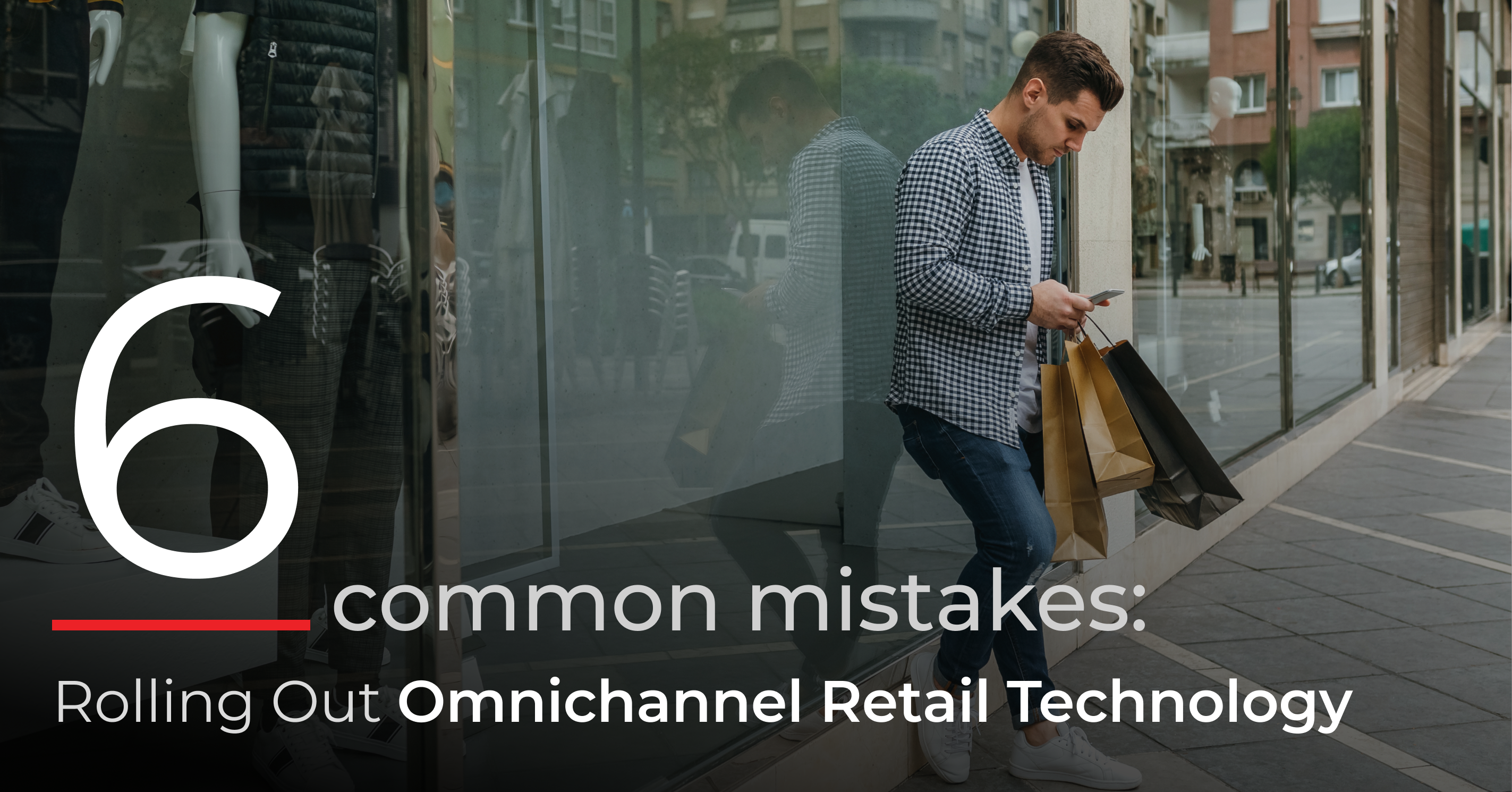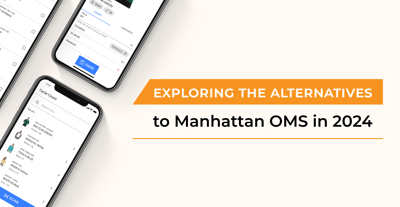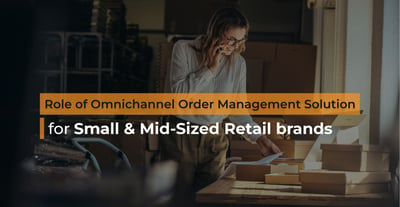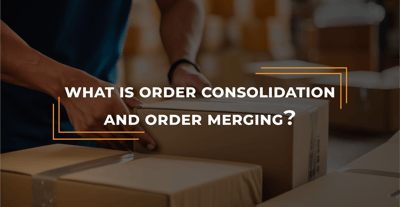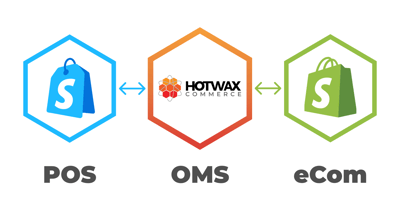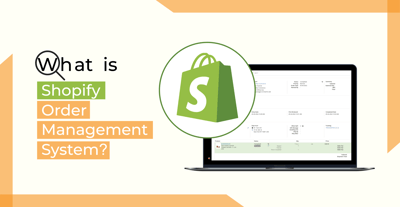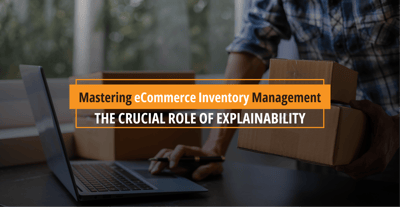Retail brands today have an endless number of digital tools and systems at their disposal. With new omnichannel retail technology solutions popping up every day, evaluating options and choosing the right software is no small endeavor. And with customer expectations changing constantly, the “right answer” can feel like a moving target.
But it’s important to remember that digital transformation is not just about the tech stack. It’s also about the fundamental business processes that guide your brand’s growth and development. No matter what IT solutions you invest in, the real challenge is to re-engineer your company's business processes to align with what's needed for omnichannel success. This is especially difficult for legacy retailers with outdated processes so ingrained in their business model.
Aligning business processes with new omnichannel retail technology is critical in order to build a successful omnichannel retail program. In this blog, I dive into six common business mistakes that brands make during their digital transformation, and how to avoid these common pitfalls as you build your digital commerce strategy.
1. Not Starting With The “As Is”
Successful digital transformation all starts with business analysis. The first step for any brand looking to invest in new omnichannel retail technology is to identify the “as is” – take stock of your current business processes and the key challenges you face. You’ll immediately notice common trends and challenges that plague multiple departments.
Many companies were rushed into rolling out new digital initiatives very quickly during the pandemic. But spinning up new channels nonstop doesn’t leave time and resources to collect the “as is” data and analyze current processes to design a new system that makes sense. Take the time to understand your current operations so you can roll out new omnichannel retail initiatives effectively.
This is especially important for legacy or established brands that have had to radically reshape their business processes and omnichannel retail technology stack in order to allow for experiences like Buy Online Pick-Up In Store (BOPIS). New brands have the luxury of rolling out omnichannel initiatives within a few weeks, because there’s very little change management involved in their decision-making and implementation process. Older brands often try to mimic that agility in order to avoid falling behind, but that only creates more problems and bottlenecks long-term.
2. Piloting New Technology at Top-Performing Stores
If you want to implement new omnichannel retail technology solutions quickly and smoothly, you need to take it step-by-step. Pilot a new initiative or software system at a few store locations before rolling it out to the whole company. The idea here is to pinpoint all possible issues and edge cases in the pilot period, so you can work out the kinks before scaling the strategy.
But many brands make the mistake of choosing their top-performing or largest, central store location for the pilot. Often, the staff at these store locations is quick to adapt to new changes and new technologies. This will skew the pilot performance and likely result in a smooth adoption with fewer challenges than will appear in lower-performing stores.
Select two or three stores for your pilot that represent a cross-section of the stores across your entire company. That way, when you roll it out to the company at large, you’ll have already encountered the vast majority of edge cases and possible challenges of your new omnichannel retail technology.
3. Ignoring the Store Associates
The secret ingredient to omnichannel retail success? Motivated store associates!
Many eCommerce brands make the mistake of forgetting that the customer experience spans both the website and the in-store journey for omnichannel strategies like Buy Online Pick-Up In Store (BOPIS). As you build out your digital commerce capabilities, it’s important to motivate and compensate store associates for each BOPIS order they work on. If the incentivization to attend to BOPIS orders is not equivalent to that of regular retail sales, your omnichannel program is doomed to fail.
Below are some additional best practices for retailers looking to align in-store operations with their larger omnichannel retail technology transformation:
- Troubleshoot your customer journey by simulating the end-to-end shopping experience.
- Take time to understand the unique dynamics of different store locations.
- Monitor store assistants via your in-store digital application.
4. Failing to Align Marketing Initiatives with Omnichannel Offerings
There is a lot of overlap between brands’ marketing strategies and omnichannel retail technology initiatives. For any type of sales activation (including coupons, promotions, etc.), retailers need to think about the integration between their CMS, OMS, and POS hardware and software to promote transparency and collaboration.
If a customer comes into the store and says “I forgot to use my promo code online, can I use it here?” it should be easy to input the code into the POS system and get the result right then and there.
Harnessing your OMS also gives you a huge advantage in terms of interacting with your customers in the right way at the right moment and ultimately driving purchases through marketing initiatives.
Just think about how much useful customer behavior data your OMS contains. Integrating your OMS with your CRM allows you to create marketing cohorts based on users’ shopping data. What products have they viewed or added to their cart? Have they made purchases in-store in the past?
As retailers invest in their digital transformation, it’s important to integrate all the systems within their omnichannel retail technology stack to drive conversions and maximize their ROI. Too often, we see brands invest in omnichannel software solutions but fail to use them to their full potential.
5. Not Pushing A Ship From Store Strategy
Why should merchandisers invest in a Ship From Store strategy?
From a technical perspective, implementing Ship From Store is very similar to implementing BOPIS when it comes to the necessary omnichannel retail technology. Harnessing your stores as micro fulfillment centers maximizes your accuracy and order fill rate for BOPIS if Ship From Store is enabled. Fulfilling online orders from the store also allows brands to keep a larger, more diverse assortment of inventory in the store. As a result, shoppers see a wider variety of products on the shelf, rather than leaving them sitting in the warehouse.
If your company is spread across a large geographical region, it doesn’t make sense to use very large fulfillment centers or distribution centers. Using stores as fulfillment locations opens the door to very fast, same-day delivery times, helping smaller retailers compete with the Amazons of the world.
It’s important to note that store associates should be rewarded more for Ship From Store orders than regular walk-in retail purchases because these orders require more effort. Stores associates need to pack these orders, print shipping labels, and use courier package services. But the advantages Ship From Store gives your company in terms of delivery flexibility are unimaginable.
6. Not Offering Buy Online, Return In Store (BORIS)
Buy Online, Return In Store (BORIS) is a fundamental component of any omnichannel retail strategy. But it's important to remember that you likely won't see an ROI from this strategy right away. This deters many retailers, but it doesn't mean it's not an incredibly important capability of your omnichannel retail technology stack that should be available to unsatisfied customers.
BORIS is crucial in fostering customer confidence and customer loyalty - the Net Promoter Score (NPS) of customers using BORIS has been found to be higher on average than a brand's general customer base. Allowing customers to come in-store to make their returns and get credit back immediately positively impacts their lifetime value.
Furthermore, BORIS helps older retailers change legacy processes, such as using paper forms to process returns.
* * *
The end-to-end ecosystem in which customers shop has changed and, as a result, their expectations have changed. But adapting to the new normal is just as much a question of business re-engineering as it is a question of technology. For any brands looking to scale out their digital and omnichannel retail offerings, they need to be prepared to invest time and resources in analyzing their current business processes in order to design and roll out an omnichannel retail technology strategy destined for success.

